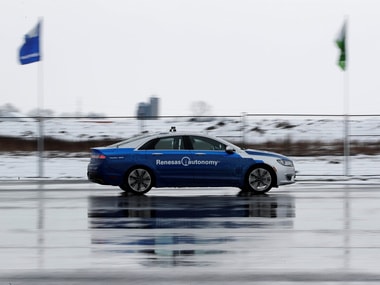On 20 March 2018, Elaine Herzberg, 49, was killed in Arizona by a self-driven Uber car. The autonomous vehicle did have a human backup driver who was in the seat next to the driver’s seat. According to reports, the backup human driver was seen looking at her mobile device than on the road.

A self-driving car drives during a demonstration at Stratford, Ontario, Canada. Reuters
In a CityLab report, two former human backup drivers from Uber gave an account of their experiences. According to them, the job is extremely difficult since they are expected to work for 8 to 10 hours without human interaction. This includes a 30-minute break which often gets reduced to 10 to 15 minutes. They are expected to log longer miles. According to an Uber spokesperson, Uber has a zero-tolerance policy for backup drivers using digital devices while on duty.
The drivers have admitted that the crash was bound to happen one day.
Recently, Buzzfeed reported that the Uber’s self-driving cars need the backup drivers to intervene once at least for every mile driven. The problem regarding autonomous cars lies not only with the technology but also the backup drivers who are involved in testing the cars.
According to investigations, the LiDAR technology was clearly the problem where the self-driving car failed to recognise the pedestrian before the collision occurred in Arizona.
Uber already has been a part of a host of controversies which also includes self-driving technology where Uber's Anthony Levandowski was accused of stealing trade secrets from Waymo. And now the recent crash has unravelled the haste Uber is in to make sure that it is ahead of others like Waymo in the self-driving car race.
Published Date: Apr 02, 2018 10:58 AM | Updated Date: Apr 02, 2018 10:58 AM